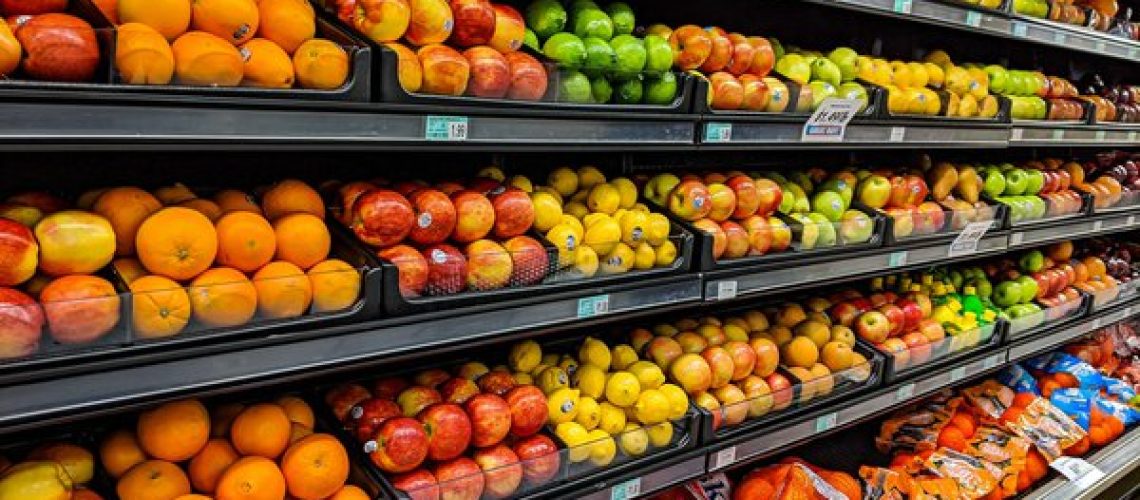The rising cost of food is hitting us all hard right now, putting pressure on families to cut down on spending. Purchasing enough groceries to nourish a family well is no easy task, but there are definitely a few game-changing tips up my sleeve that can offer some relief. Here are a few easy dietitian-approved strategies around weekly meal planning and grocery shopping that will help to offset the financial burden of food inflation:
- Map out your weekly meals
It’s so easy to get stuck in the cycle of flying by the seat of your pants when it comes to figuring out what to put on table. If you are the “head chef” of your family, you know it takes time and energy to plan and execute home-cooked meals. Ironically, not taking the time to meal plan can lead to more wasted time, and mental energy, and more stress around what to prepare and serve. And we all know that when there’s no meal plan in place, the likelihood of impulse take-out orders goes way up (along with money spent on food each month)!
Blocking out time to meal plan in your weekly schedule is an important strategy when it comes to saving money on food. Here are a few ideas to get you started:
- First, use up food that is about to go bad or expire—planning your meals around the ingredients you already have at home will help reduce food waste and save you money.
- Write a list of what you need and stick to it—having a list on hand will save you time wondering the aisles of the grocery store and help prevent impulse product purchases that aren’t on the list!
- Batch cooking meals (soups, stews, casseroles etc) is a great way to use up bulk ingredients (saving you money) and portion out freezer meals for lunches or for later in the week/month (saving you time).
- Check out my Menu Plan Collection & Recipe E-Book (both of which you have free access to on the Learning Tree’s Private Nutrition Landing Page if you would like help with getting started!
- Try out online grocery shopping:
You might be surprised to hear that shopping for groceries online is a great way to save both time and money! There is no need to leave your home and spend precious time driving to the store, walking the grocery aisles, loading and then unloading groceries! Instead, simply filter through sections on the grocery stores website or mobile app. Online grocery shopping does come with a small service fee for shopping and/or delivery of your items. However, I find this service fee is worth it when it cuts down the impulse buys that seem to sneak into my cart when I physically go to the grocery store. Online grocery shopping makes it easy to search deals or use electronic coupons at the online check out!
If you think this strategy could be a good fit for your family, check out one of the many online grocery shopping options available:
- Shopping List (traderjoes.com)
- Online Ordering | Whole Foods Market
- Online Grocery Shopping with Delivery & Pickup | Save-On-Foods
- Grocery Pickup – Order Online, Pickup Curbside at the Store | ALDI US
- Walmart.com | Save Money. Live Better
- More Ways to Meijer
- When shopping, use these money-saving hacks:
-
- Generic products are cheaper than brand name products since much less is spent on advertising and marketing
- Bulk items are cheaper than smaller packaged items since manufacturers spend less to package products in bulk than they do on packaging smaller or individual products.
- Plant-based proteins like chickpeas, beans and lentils are much cheaper than animal-based proteins like poultry, beef, pork and eggs. This is because they require much less water and resources to grow, process and distribute. Check out some of my most popular recipes using lentils 5 Healthy Lentil Recipes Kids Love – Sarah Remmer, RD
- In season produce is cheaper than vegetables and fruit that are out of season. In season produce is in higher supply, therefore is sold at a lower price than produce out of season (in lower supply).
- Frozen veggies and fruit are almost always less expensive than fresh produce. They are frozen at peak ripeness and last a much longer time before spoiling compared to fresh produce.
Foods that haven’t been manipulated or processed in any way are usually cheaper since they don’t require any extra labor costs of processing. A block of cheese for example is cheaper than a bag of shredded cheese. Just like a head of lettuce is less expensive than bagged salads. Chopping your own veggies and fruits will always be less expensive than buying premade veggie/fruit trays.

